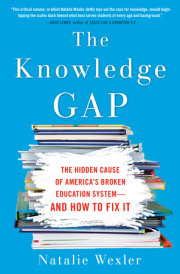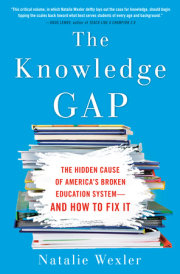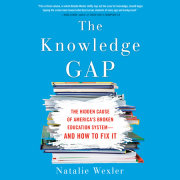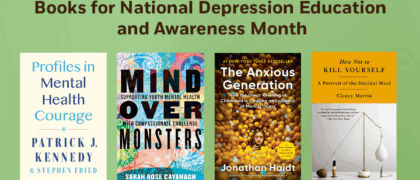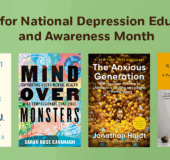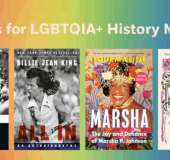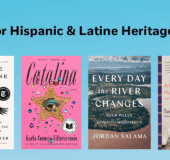On a sunny November morning in 2016, Gaby Arredondo is trying to initiate twenty first-graders into the mysteries of reading.
Today’s particular mystery is captions. Ms. Arredondo recently gave a test that asked her students to identify a caption, and—even though she had spent fifteen minutes teaching the concept—many chose the title of the passage instead. Maybe they were confused because the captions she had taught as examples were all at the top of the page, like a title, whereas the caption on the test appeared
under the picture. Her goal today is to show her students that what makes something a caption isn’t where it appears on the page or what it looks like but what it does: it’s a label that describes a picture.
“What is a
caption?” Ms. Arredondo begins brightly to the first group of five students gathered before her at a semicircular table. As she speaks, she writes
caption on a whiteboard next to her chair. No one answers. Ms. Arredondo writes a second word:
label.
“It’s a label,” volunteers one girl.
“What
kind of a label?” Ms. Arredondo prods.
A boy chimes in: “It’s a label that describes things.”
“What kinds of things? Does it tell us the author or the title?”
“It tells us the author and the title,” the boy repeats dutifully.
“No,” Ms. Arredondo says. “It tells us about the
picture.”
She shows them a photo from a book called
Mothers, which has the words
daughters,
mother, and
son superimposed in the appropriate spots. “So, what is a caption?”
“Words?” a girl named Nevaeh ventures.
The Washington, D.C., charter school where Ms. Arredondo teaches, Star Academy, has a good reputation and has benefited from both philanthropic and government funding. Located in a high-poverty African American community, the school has a staff that includes a full-time occupational therapist, two speech-and-language therapists, and two school psychologists—critical resources, considering that 17 percent of the students need special education services and all families are poor enough to qualify for free or reduced school meals.
And Ms. Arredondo, in her second year of teaching, is a highly valued faculty member. She graduated from Princeton University, the first in her working-class family to go to college—an achievement that was possible, she feels, only because she managed to get into a selective public high school. She became a teacher in hopes of helping other kids transform their circumstances through education.
During the months I’ve been observing Ms. Arredondo’s class, I’ve seen that she’s skilled at classroom management techniques, firm when she needs to be but also warm enough to establish bonds with her students. She’s hardworking, dedicated, and patient with these often rambunctious kids.
But after Nevaeh suggests that
caption just means
words, Ms. Arredondo’s patience seems to be fraying. She starts pointing to the text on the page opposite the photo, asking, “Is
this a caption? . . . Is
this a caption? . . . Is
this a caption?” The kids repeatedly answer, “No.”
“It’s not just any
word,” she says. “The words describe
what? I’m a little upset right now, because I’ve said it.”
“A label?” one of the kids offers again.
“What does the caption
tell us?” Ms. Arredondo says more softly.
“About the pictures,” a girl says at last.
“The
pictures,” Ms. Arredondo echoes.
The kids in the next group keep trying to pull the discussion away from the abstract nature of a caption and toward the concrete. One of the nonfiction books that Ms. Arredondo is holding up is about sharks, with vivid photos that pique the children’s curiosity—especially one showing a shark that has half-swallowed what the caption at the side simply identifies as a “sea animal.”
“Oooh!” the students cry out. “What’s he eating? Oh my God! Is it a fish?”
“If you were going to write a caption on this page, what would you write?” Ms. Arredondo asks. The students don’t answer.
Next, she shows them a picture of a planet that the students decide is the moon. They point to the title, the subheading—anything but the caption. Finally, she points to the caption herself and reads it aloud: “Now you can take a trip to Mars without ever leaving Earth.”
“Right there!” she exclaims. “That’s our caption. This
isn’t the moon! It’s Mars! So we have to read the caption so we know what the picture is about!”
The kids aren’t buying it. “It’s the moon,” one student declares.
“I thought Mars was
red,” a girl says skeptically. The photo is in black and white.
Ms. Arredondo doesn’t respond. It’s time to move on to the culminating activity she has planned: students will write their
own captions. She shows them a funny photo of a group of goats perched on the branches of a tree, like absurd four-legged birds. I find myself wondering why goats would be up in a tree, but the students don’t ask, and Ms. Arredondo doesn’t volunteer an explanation. The point of this lesson isn’t to learn about tree-climbing goats—or sharks or planets. It’s to learn about captions.
Ms. Arredondo goes off to check on the students who are working independently elsewhere in the classroom while the kids at the table write a variety of captions on Post-it notes, some legible and some not. One boy colors with markers. Another student writes
riog. Two boys who are sitting next to each other both write
goll. When I ask one of them what his caption says, he tells me it says
giggles.
But when Ms. Arredondo comes back, the boy says the word is supposed to be
goat. When another student objects that he hasn’t spelled the word right, Ms. Arredondo answers calmly, “That’s okay. That’s how he spells
goat.” Her response reflects prevailing views on the best way to handle spelling errors in the early-elementary grades: she doesn’t want to get sidetracked into a spelling lesson, and she doesn’t want her students to lose confidence about writing down their ideas.
Ms. Arredondo sticks one of the Post-its with the word
goll under the photograph of the tree-climbing goats, saying, “That tells us more about this picture.”
While Ms. Arredondo’s approach might seem peculiar, it’s the way she and virtually all other elementary teachers in the United States have been trained. If she’s having a hard time engaging her students, it’s not because she’s a bad teacher. In many ways, she does an excellent job.
The theory that has shaped the American approach to elementary education goes like this: Reading—a term used to encompass not just matching letters to sounds but also comprehension—is a set of skills that can be taught completely disconnected from content. It doesn’t really matter
what students are reading. Teach them to identify captions in a simple text—or find the main idea, or make inferences, or any one of a number of other skills—and eventually they’ll be able to grasp the meaning of any text put in front of them.
And, the argument goes, through the third grade, children need to spend their time “learning to read” before they can progress to “reading to learn.” Social studies and science can wait; history is too abstract for their young minds and
should wait. In the early years, the focus must be on the reading skills that will equip students to acquire knowledge about the world—later.
It’s not surprising, then, that reading has long dominated the elementary curriculum. As far back as 1977, early-elementary teachers were spending more than twice as much time on reading as on science and social studies combined. Even in the upper-elementary grades, when students have presumably already acquired basic reading skills, teachers spent twice as much time on reading as on either science or social studies alone.
That focus only intensified after Congress passed the No Child Left Behind legislation in 2001. NCLB required annual reading and math tests in grades three through eight and once in high school—and threatened significant consequences if schools failed to get 100 percent of their students to proficiency by 2014, a goal that was widely recognized as impossible to meet. As a result, the amount of time schools spent on reading and math grew, while time spent on other subjects—particularly social studies—correspondingly decreased.
By 2012, early-elementary teachers reported spending an average of only sixteen minutes a day on social studies and nineteen on science—figures that, because they are self-reported, may well be overestimates. The elementary “literacy block,” largely focused on reading, now consumes anywhere from ninety minutes to three hours each day. And teachers have shaped their reading instruction in ways they believe will prepare their students to do well on standardized tests, which aim to assess comprehension skills. The rest of the day is devoted mostly to math.
The schedule may allot half an hour or forty-five minutes to social studies or science a few times a week, usually at the end of the day, when students are tired: a simple science experiment or a read-aloud about George Washington or Abraham Lincoln before Presidents’ Day. (Struggling readers are unlikely to get even that, because they’re often pulled from social studies and science to get extra help.) In any event—and especially when the same teacher is responsible for teaching all subjects, as is usually the case—often that time ends up also being spent on reading or math.
The state-mandated tests each spring represent only a small fraction of the time consumed by related activities. Up to a quarter of the school year is spent preparing for tests, taking practice tests, and taking “benchmark” tests designed to predict performance at the end of the year.
Opposition to testing began brewing soon after the passage of No Child Left Behind, but it reached a fever pitch after most states adopted the Common Core starting in 2010. The new tests created to align with those academic standards were longer and significantly tougher. Across the country, especially in affluent suburban districts, many parents joined an “opt-out” movement. Even then-Secretary of Education Arne Duncan, whom many blamed for the orgy of testing, acknowledged that the situation had gotten out of hand. In 2015, Congress replaced NCLB with the Every Student Succeeds Act, which attaches fewer consequences to low scores. States are still required to give annual reading and math exams and report the results, however, and there is little evidence they’re reducing either the amount of testing or the importance placed on it.
To be sure, there are compelling arguments in favor of testing. No Child Left Behind required that schools report scores for various subgroups—including minority and low-income students—which brought to light serious and long-hidden inequities. And reading tests are seen as the only way to hold schools accountable for giving children the skills they’ll need to learn history, science, and other subjects later on. Students who aren’t reading on grade level by third grade are four times less likely to graduate from high school. If the child is poor, the odds are even worse.
Still, an overwhelming majority of teachers deplore the emphasis on testing and the consequent narrowing of the curriculum. Many would prefer to spend more time on social studies and science, and they know their students would as well. As Ms. Arredondo observed, “They love learning about things they don’t know anything about.”
But she feels that the time spent on reading is necessary. Teaching the concept of captions, she told me, was an important first step in helping her students understand the difference between fiction, which generally doesn’t have captions, and nonfiction. Captions also provide information in a more manageable format than lengthy paragraphs, which struggling readers like her students may find overwhelming.
Some teachers question the whole idea of trying to teach reading comprehension as a set of discrete skills. For most, though, it’s simply the water they’ve been swimming in, so universal and taken for granted they don’t question or even notice it. It’s not about test scores; it’s just the way to teach kids to read. And if kids don’t seem to be getting it, the solution is to double down, through middle school, if necessary.
But there’s a conundrum at the heart of these efforts: despite many hours of practice and an enormous expenditure of resources, American students’ reading abilities have shown little improvement over more than twenty years, with about two-thirds of students consistently scoring below the “proficient” level. Most fourth-graders aren’t actually ready to progress from “learning to read” to “reading to learn.” Writing scores are even worse: about three-quarters of eighth-and twelfth-graders score below proficient. International tests have shown that our literacy levels are falling, for both children and adults.
“We seem to be declining as other systems improve,” a federal official who oversees the administration of international tests has observed. “There is a lot to be concerned about.”
Copyright © 2019 by Natalie Wexler. All rights reserved. No part of this excerpt may be reproduced or reprinted without permission in writing from the publisher.



